Qijia Culture – Its Disappearance Remains An Ancient Mystery
Ellen Lloyd - AncientPages.com - The ancient Qijia culture remains a historical and archaeological puzzle. Its mysterious and sudden disappearance leaves us with many unanswered questions.
What happened to these ancient people? Evidence of a mysterious prehistoric disaster has been uncovered at an amazing archaeological dig in the upper reaches of the Yellow River.
Discovery Of The Qijia Culture
Evidence of the culture was first unearthed in the small village of Qijiaping, in the northwestern Chinese province of Gansu, in the early 1920s by the Swedish geologist Johan Gunnar Andersson.
Map of the Neolithic to Bronze Age in North China and the Eurasian steppe. Map built with the help of Li Liu and Xingcan Chen: The Archaeology of China: From the Late Paleolithic to the Early Bronze Age, Cambridge University Press
Around the mid-20th and early 21st centuries, more ancient sites were discovered suggesting that the Qijia culture existed from about 2250 B.C to 1900 B.C.and it is the only Neolithic culture to be uncovered in China that shows the northern Eurasian influence.
This pot, found in the tomb with the small chamber, contains o-shaped incisions that form an elaborate design. It is handmade and made of red clay. (Photo courtesy Chinese Cultural Relics.)
Little is known about the Qijia culture, but excavations revealed that these people lived in large villages in terraces along the Huang He (Yellow River) and buried their dead in pits. Their most common implements were stone axes and rectangular knives, although small copperware items.
Bronze mirror, Gansu. Qijia culture (2400 - 1900) National Museum of China. Image credit: Prof. Gary Lee Todd
Scientists also discovered “bone divination lots,” which are artifacts used to predict the future. Some of the unearthed artifacts included comb-like designs and amphora-like vases that are unfamiliar in ancient China. Did these items and motifs perhaps originate in another part of the world?
Archaeological Excavations Shed Some Light On The Mysterious Disappearance Of The Qijia Culture
When archaeologists excavated the ruins of two of four half-underground cellar-like houses in the 400-home village, they found human remains dating back 3,500 to 4,000 years. At the site of one house, the remains of 14 human beings in groups of three to five shocked the researchers. It was the first time Chinese archaeologists had stumbled upon the remains of so many ancient people in a single house.
Although Chinese archaeologists have clues to the existence of Qijia Culture ruins in Qinghai Province from as early as the 1950s, they did not actually find the site until 30 years later.
The skeleton of an adult female who is facing toward the northwest was discovered among the prehistoric tombs in China. Much of her skeleton below the abdomen is destroyed. Credit: Courtesy Chinese Cultural Relics.
Even after the first excavation was conducted near Lajia Village in 1999, when some large jade articles such as pendants and knives typical of the Qijia culture were unearthed, archaeologists were not sure what else was awaiting them.
The 14 sets of human bones were found buried irregularly around the house, covering a floor space of roughly 14 square meters. Some lie on one side, others are entwined, as if in an embrace, while still others seem to crawl.
Near the round-shaped cooking stove in the center of the house is a skeleton that appears to be an adult, with hands raised over the head and two legs arched together. It is possible the person was killed before the body hit the ground.
In this tomb a small chamber filled with pottery was found beside the skeletons. (Photo courtesy Chinese Cultural Relics.)
Zhao Zhijun, a doctor in archaeology and a research fellow with the CASS Archaeology Institute said he had never seen anything like this before.
Something enormously extraordinary must have happened to these ancients," he said. "The young and strong have run for life, leaving behind children and the elderly who then appeared to have hidden in places they thought were safe to shelter in," Zhao said.
A cluster of the remains of five ancients was found in the southwestern section of the house, appearing to be four children under the protection of one senior person.
Near the east wall, one could see the skeleton of an elder sitting against the wall, propped up with the right hand, the left hand holding a baby to its bosom, its face close to the head. The baby's two tiny hands are fastened around the elder at the waist, giving an impression of pain and horror.
A Rare Site Of A Prehistoric Disaster
It remains unclear what caused the death of these horrified people. Some archaeologists think the Qijia culture was a victim of pestilence or a plague. Another proposal points to religious action. There are suggestions of infanticide, but there is not enough evidence to support these claims.
There are also scientists who say we should not ignore environmental changes in the region. “Most suggestions about the root cause of the disaster, such as flood or pestilence, suggest a relationship between man and nature at the time of the tragedy," said Wang Renxiang, head of the excavation team and research fellow of the CASS Archaeology Institute. "If they are verified, that means the area had already witnessed some environmental and ecological deterioration as much as 4,000 years back.
We may never come to the bottom with this sad, ancient mystery, but there is no doubt that something terrible caused the mysterious disappearance of the Qijia culture.
Written by Ellen Lloyd – AncientPages.com
Copyright © AncientPages.com This material may not be published, broadcast, rewritten or redistributed in whole or part without the express written permission of AncientPages.com
More From Ancient Pages
-
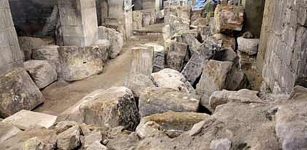 Archaeologists Excavate Two Roman Bath Hidden In A Dark Passage Below The Streets Of Bath
Archaeology | Apr 26, 2016
Archaeologists Excavate Two Roman Bath Hidden In A Dark Passage Below The Streets Of Bath
Archaeology | Apr 26, 2016 -
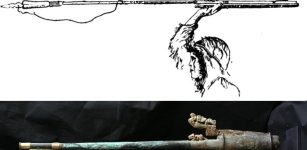 Atlatl Weapon Use By Prehistoric Females Equalized The Division Of Labor While Hunting – Study Shows
Archaeology | Aug 18, 2023
Atlatl Weapon Use By Prehistoric Females Equalized The Division Of Labor While Hunting – Study Shows
Archaeology | Aug 18, 2023 -
 The Third Greatest Fire Temple That Existed In Ancient Iran’s Sassanid Age – Unearthed
Archaeology | Jul 8, 2022
The Third Greatest Fire Temple That Existed In Ancient Iran’s Sassanid Age – Unearthed
Archaeology | Jul 8, 2022 -
 Mead: Secret Drink Of The Vikings And Gods – Was It An Ancient Antibiotic?
News | Feb 21, 2016
Mead: Secret Drink Of The Vikings And Gods – Was It An Ancient Antibiotic?
News | Feb 21, 2016 -
 The Mysterious Metaphysical World Of Isaac Newton
Ancient Mysteries | Aug 21, 2018
The Mysterious Metaphysical World Of Isaac Newton
Ancient Mysteries | Aug 21, 2018 -
 World’s Oldest Burial Site Reveals Homo Naledi Buried Their Dead 100,000 Years Before Humans
Archaeology | Jun 6, 2023
World’s Oldest Burial Site Reveals Homo Naledi Buried Their Dead 100,000 Years Before Humans
Archaeology | Jun 6, 2023 -
 Nakanishi Ruins: One Of Japan’s Largest Ruins Discovered In Nara
Civilizations | Aug 22, 2015
Nakanishi Ruins: One Of Japan’s Largest Ruins Discovered In Nara
Civilizations | Aug 22, 2015 -
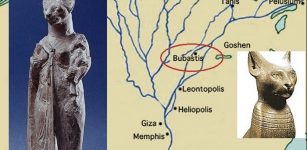 Bastet: Protector And Punisher – She Was Among The Most Majestic Egyptian Deities
Egyptian Mythology | Jun 21, 2019
Bastet: Protector And Punisher – She Was Among The Most Majestic Egyptian Deities
Egyptian Mythology | Jun 21, 2019 -
 Ireland, Wales And The Scholar Who Helped Unravel Their Celtic Connections
Featured Stories | Sep 25, 2024
Ireland, Wales And The Scholar Who Helped Unravel Their Celtic Connections
Featured Stories | Sep 25, 2024 -
 Sobek – Enigmatic Crocodile God Of Ancient Egypt
Civilizations | Sep 5, 2015
Sobek – Enigmatic Crocodile God Of Ancient Egypt
Civilizations | Sep 5, 2015 -
 Ryujin: Benevolent And Righteous Dragon-King And Sea God In Japanese Legends
Featured Stories | Jun 10, 2024
Ryujin: Benevolent And Righteous Dragon-King And Sea God In Japanese Legends
Featured Stories | Jun 10, 2024 -
 On This Day In History: Albertus Magnus – Medieval Person Of Great Historical Importance Died – On Nov 15, 1280
News | Nov 15, 2016
On This Day In History: Albertus Magnus – Medieval Person Of Great Historical Importance Died – On Nov 15, 1280
News | Nov 15, 2016 -
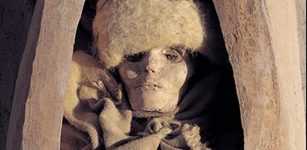 Mysterious Sleeping Beauty Of Loulan Mummy Is Still Perfectly Preserved After 3,800 Years!
Civilizations | Oct 30, 2014
Mysterious Sleeping Beauty Of Loulan Mummy Is Still Perfectly Preserved After 3,800 Years!
Civilizations | Oct 30, 2014 -
 Roman Leather Toy Mouse Found At Vindolanda
Archaeology | Jun 6, 2023
Roman Leather Toy Mouse Found At Vindolanda
Archaeology | Jun 6, 2023 -
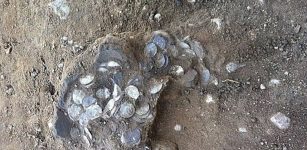 Viking Age silver coins unearthed in Jutland
Artifacts | Aug 27, 2015
Viking Age silver coins unearthed in Jutland
Artifacts | Aug 27, 2015 -
 Unusual Archaeological Object Reveals Traces Of Prehistoric Settlements Mikołajki
Archaeology | Jun 19, 2023
Unusual Archaeological Object Reveals Traces Of Prehistoric Settlements Mikołajki
Archaeology | Jun 19, 2023 -
 What Happened To The Pythagorean Brotherhood?
Ancient History Facts | Apr 5, 2021
What Happened To The Pythagorean Brotherhood?
Ancient History Facts | Apr 5, 2021 -
 Meskiaggasher: Legendary Founder Of The First Dynasty Of Uruk Who ‘Entered The Sea And Disappeared’
Featured Stories | Apr 20, 2021
Meskiaggasher: Legendary Founder Of The First Dynasty Of Uruk Who ‘Entered The Sea And Disappeared’
Featured Stories | Apr 20, 2021 -
 Baffling North American Ancient Skulls Contradict Historical Timelines And Mainstream Theories
Ancient Mysteries | Jun 11, 2020
Baffling North American Ancient Skulls Contradict Historical Timelines And Mainstream Theories
Ancient Mysteries | Jun 11, 2020 -
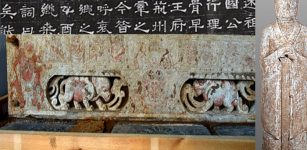 1,500-Year-Old Tomb With Patterns Linked To Zoroastrianism And Buddhism Unearthed In C. China
Archaeology | Jan 19, 2021
1,500-Year-Old Tomb With Patterns Linked To Zoroastrianism And Buddhism Unearthed In C. China
Archaeology | Jan 19, 2021





